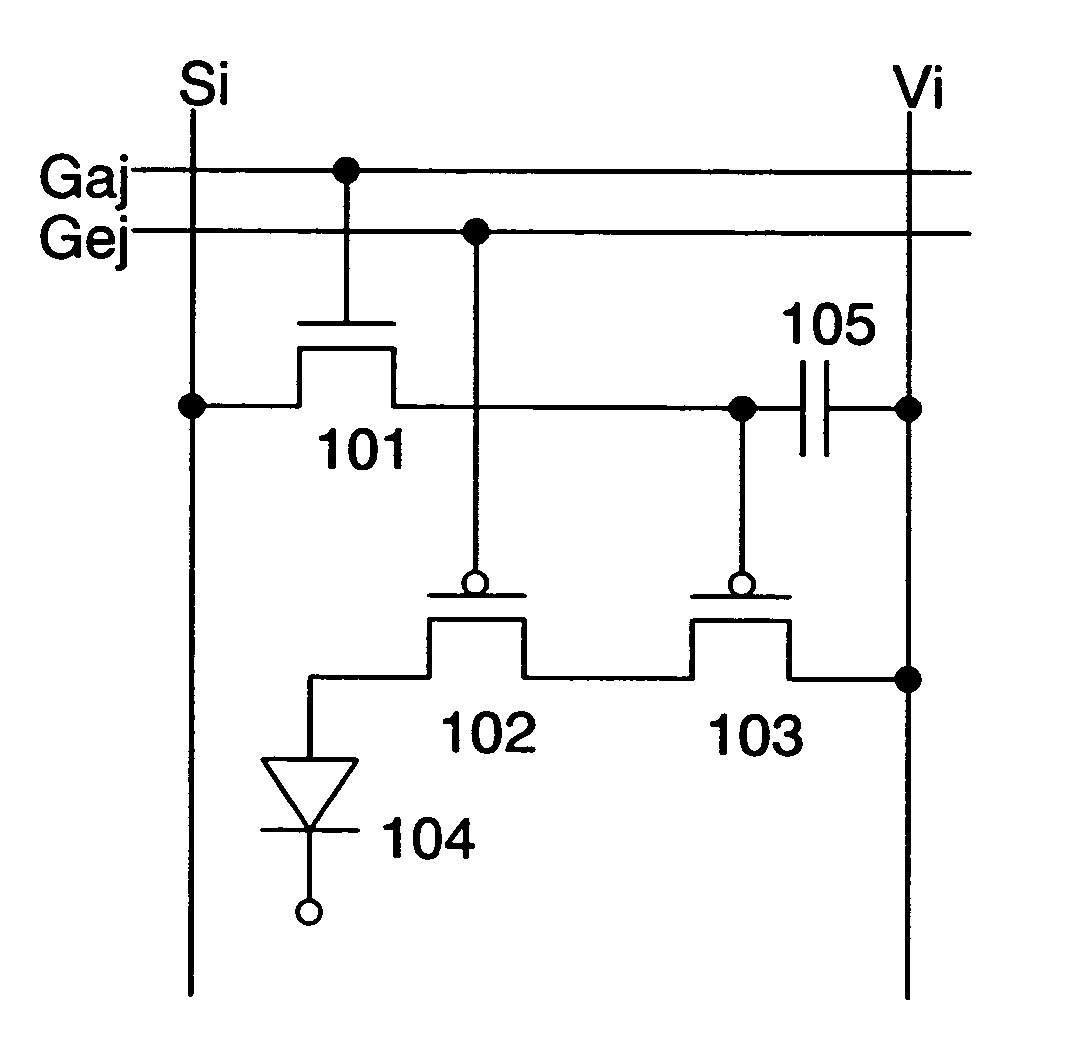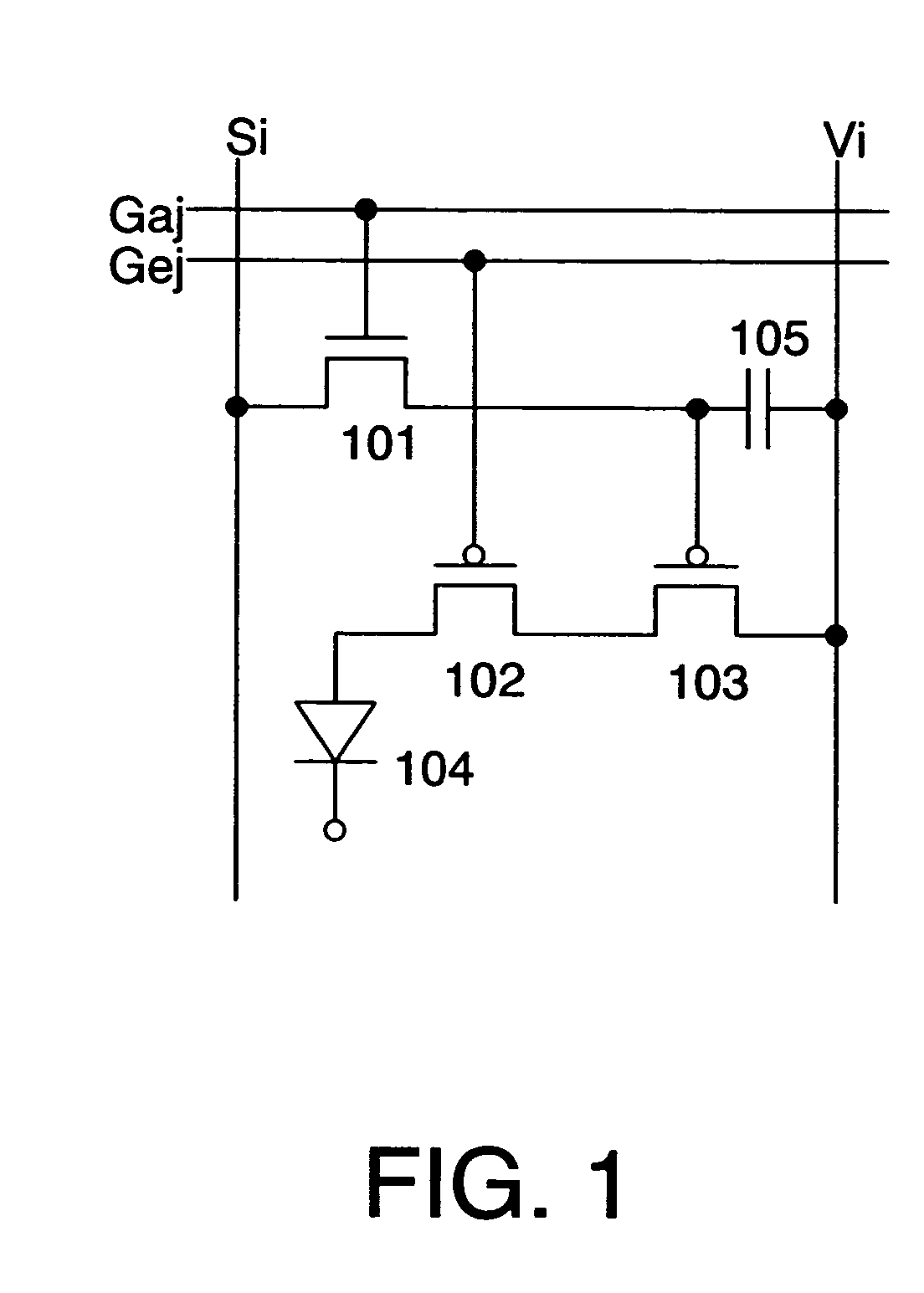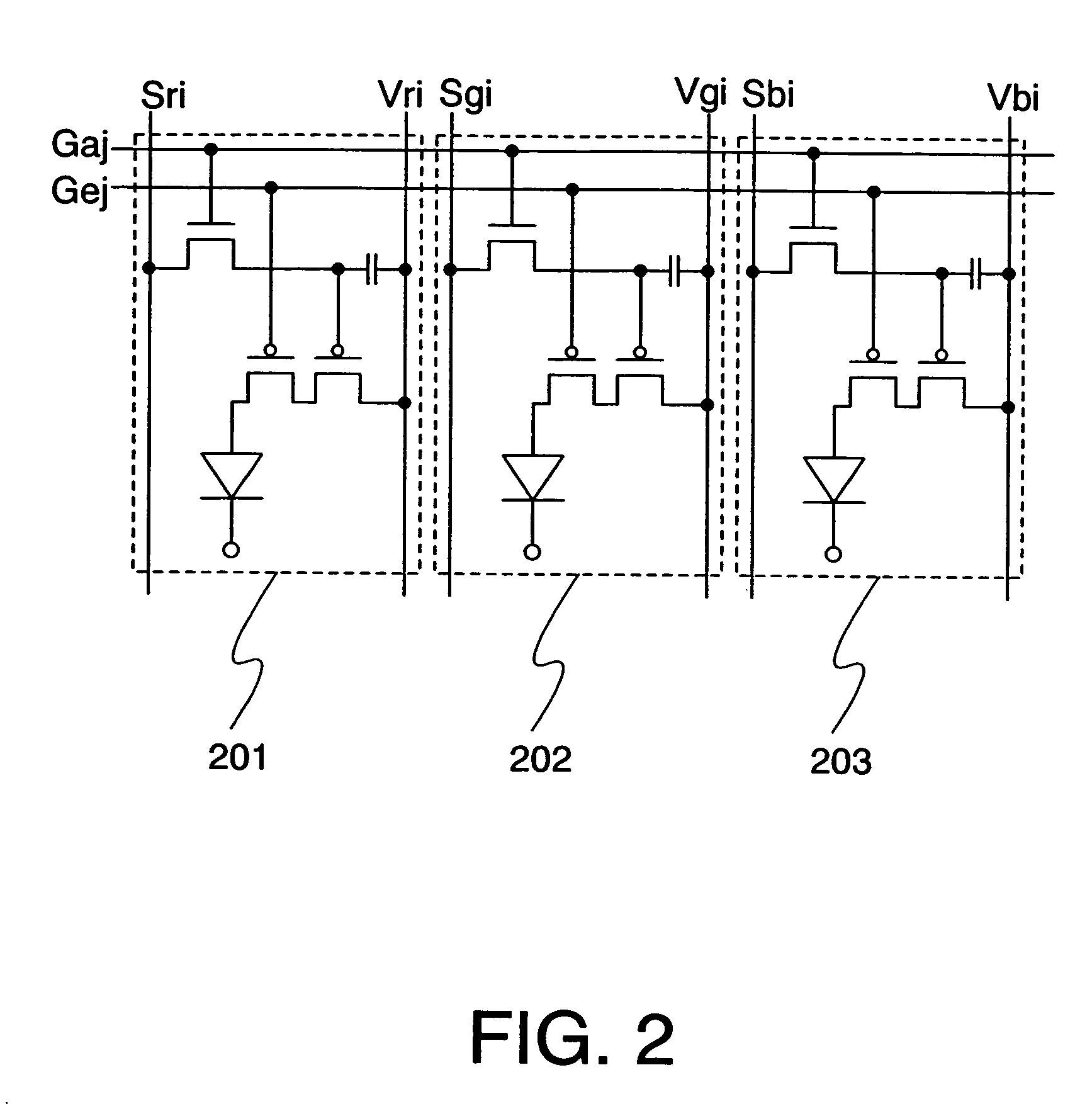Element substrate and a light emitting device
a technology of light emitting device and element substrate, which is applied in the direction of static indicating device, electroluminescent light source, instruments, etc., can solve the problems of affecting the image quality of the light source, and the capacitor storage capacity of the capacitor is increased, and the effect of enhancing the image quality
- Summary
- Abstract
- Description
- Claims
- Application Information
AI Technical Summary
Benefits of technology
Problems solved by technology
Method used
Image
Examples
embodiment mode 1
[0034]FIG. 1 shows an embodiment mode of a pixel of the light emitting device of the invention. The pixel shown in FIG. 1 comprises a light emitting element 104, a switching transistor 101 used as a switching element for controlling an input of a video signal to the pixel, a driving transistor 102 for controlling current flowing in the light emitting element 104, and a current controlling transistor 103 for controlling a current supply to the light emitting element 104. In addition, it is also possible to dispose in the pixel a capacitor 105 for storing a potential of a video signal.
[0035]The driving transistor 102 and the current controlling transistor 103 have the same conductivity. According to the invention, the driving transistor 102 is operated in a saturation region and the current controlling transistor 103 is operated in a linear region.
[0036]The channel length (L) of the driving transistor 102 may be longer than its channel width (W), and L of the current controlling trans...
embodiment 1
[0058]Described in this embodiment are a configuration of an active matrix display device to which the pixel configuration of the invention is applied and its drive.
[0059]FIG. 8 shows a block diagram of an external circuit and a schematic view of a panel.
[0060]An active matrix display device shown in FIG. 8 comprises an external circuit 8004 and a panel 8010. The external circuit 8004 comprises an A / D converter unit 8001, a power supply unit 8002, and a signal generator unit 8003. The A / D converter unit 8001 converts an image data signal which is input as an analog signal into a digital signal (video signal), and supplies it to a signal driver circuit 8006. The power supply unit 8002 generates power having a predetermined voltage from the power supplied from a battery or an outlet, and supplies it to the signal driver circuit 8006, a first scan driver circuit 8007, a second scan driver circuit 8012, an OLED 8011, the signal generator unit8003, and the like. The signal generator unit...
embodiment 2
[0074]Described in this embodiment is a second scan driver circuit, which adopts a method for controlling a white balance by applying a different potential to a gate electrode of each driving transistor in the red, green, and blue pixels as described with reference to FIG. 3 in embodiment mode. FIG. 10 shows a block diagram of the second scan driver circuit of this embodiment, and FIG. 3 shows a pixel configuration of this embodiment.
[0075]The second scan driver circuit 8012 comprises a shift register 1002 including a plurality of stages of D-flip flops 1001, a level shifter 1003, a buffer 1004, and the like.
[0076]It is assumed that a clock signal (G-CK), an inverted clock signal (G-CKB), and a start pulse (G-SP) are input.
[0077]The buffers 1004 each connected to scan lines Gerj (j=1 to y), Gegj (j=1 to y), and Gebj (j=1 to y) are connected to different power supply lines. Specifically, the buffer to which the scan line Gerj is connected is connected to a power supply line R, the bu...
PUM
 Login to View More
Login to View More Abstract
Description
Claims
Application Information
 Login to View More
Login to View More - R&D
- Intellectual Property
- Life Sciences
- Materials
- Tech Scout
- Unparalleled Data Quality
- Higher Quality Content
- 60% Fewer Hallucinations
Browse by: Latest US Patents, China's latest patents, Technical Efficacy Thesaurus, Application Domain, Technology Topic, Popular Technical Reports.
© 2025 PatSnap. All rights reserved.Legal|Privacy policy|Modern Slavery Act Transparency Statement|Sitemap|About US| Contact US: help@patsnap.com



